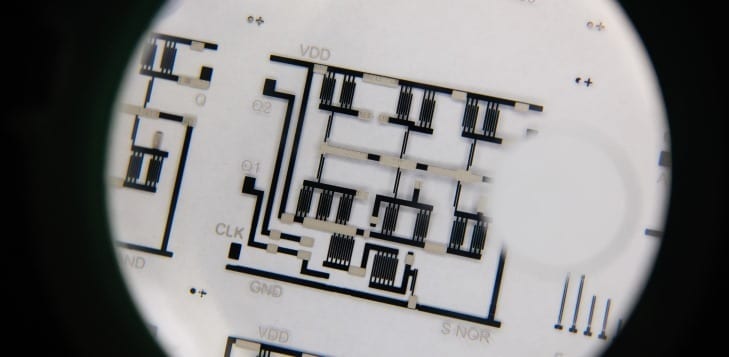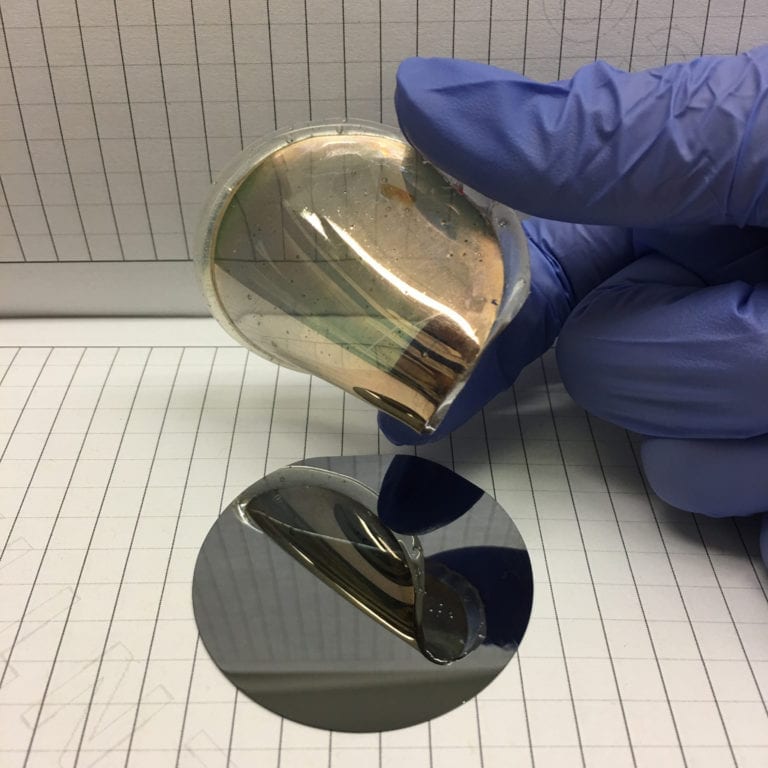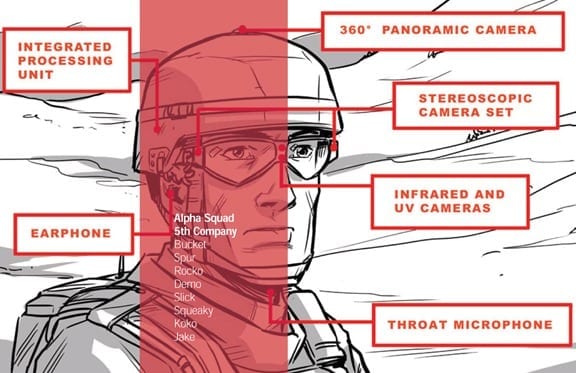
Nanyang Technological University (NTU) has successfully printed complex electronic circuits using a common t-shirt printer.
The electronic circuits are printed using unique materials in layers on top of everyday flexible materials such as plastic, aluminium foil and even paper.
Resistors, transistors and capacitors, the key components of a complex electronic circuit, are printed using non-toxic organic materials like silver nanoparticles, carbon and plastics.
Associate Professor Joseph Chang, leader of the NTU research group said their unique printing technique has made mass production of cheap disposable electronic circuits possible.
“This means we can have smarter products, such as a carton that tells you exactly when the milk expires, a bandage that prompts you when it is time for a redressing, and smart patches that can monitor life signals like your heart rate,” said the electronics expert from NTU’s School of Electrical and Electronic Engineering.
“We are not competing with high-end processors like those found in smartphones and electronic devices. Instead we complement them with cheaply printed circuits that cost mere cents instead of a few dollars, making disposable electronics a reality.”
The types of complex circuits the team has successfully printed include a 4-bit digital-to-analog converter – a component commonly used in turning digital signals into sound for speakers and headphones; and radio-frequency identification (RFID) tags, commonly used for tracking of goods.
The key difference between Prof Chang’s method and the other types of printed electronics is that it is fully additive, which makes it very eco-friendly. The circuits are printed entirely without the use of any toxic chemicals or oxidising agents.
“Our innovative process is green, using non-corrosive chemicals. It can be printed on demand when needed within minutes. It is also scalable, as you can print large circuits on many types of materials and most importantly, it is low cost, as print technology has been available for decades,” Prof Chang added.
The innovative printing method pioneered by NTU has resulted in two provisional patents and research papers in several scientific publications, including one which was the second most downloaded in Sciencedirect, a database of 2,500 journals. Of the two patents, one is on a cheap disposable Internet-of-Things for Drug Medication Adherence.
The Latest on: Flexible electronic circuits
[google_news title=”” keyword=”Flexible electronic circuits” num_posts=”10″ blurb_length=”0″ show_thumb=”left”]
via Google News
The Latest on: Flexible electronic circuits
- Conductive Ink Market Is Encouraged to Reach USD 5.6 Billion by 2033 at a CAGR of 6.3%on April 26, 2024 at 2:15 am
According to Market.us, the Conductive Ink Market size is projected to surpass around USD 5.6 billion by 2033, from USD 3.5 billion in 2023, and it is poised to reach a registered CAGR of 6.3% from ...
- Flexible Electronics Market Charting a Course Future-Proofing Your Business for Market Changeson April 21, 2024 at 3:26 pm
Flexible Electronics Market was valued at $23.64 billion in 2019, and is projected to reach $42.48 billion by 2027, registering a CAGR of 7.4% from 2020 to 2027. Flexible electronics is a potential ...
- ENNOVI Introduces a New Flexible Circuit Production Process for Low Voltage Connectivity in EV Battery Cell Contacting Systemson April 3, 2024 at 4:00 am
New automotive-grade flexible die-cut circuit (FDC) capability gives engineers a more sustainable wiring option for new battery designs without compromising on performance SINGAPORE, April 3 ...
- Flexible and Stretchable Electronics: Revolutionizing Wearable Devices, Healthcare, and Soft Roboticson April 1, 2024 at 12:09 am
What are Flexible and Stretchable Electronics? Flexible and stretchable electronics combine electronic circuits with flexible and elastic materials. These devices can bend, twist, and stretch without ...
- A new dawn for flexible electronics: Eliminating energy wasteon March 25, 2024 at 1:19 pm
Researchers have unveiled an innovative approach to create flexible organic integrated circuits (ICs) devoid of parasitic capacitance. This advancement heralds a substantial enhancement in the dynamic ...
- Flexible and Large-Area Electronicson March 9, 2024 at 4:58 am
Specific Elements will provide in-depth coverage of key technologies, materials and techniques for the design and manufacturing of flexible electronic circuits and systems, as well as cutting-edge ...
- Researchers pioneer electronics-free circuit to propel soft robot evolutionon January 31, 2024 at 11:15 am
Soft circuit devices, which are flexible and don't use metal, can handle damage much better than those with delicate electronics. They can survive being crushed or exposed to harsh chemicals ...
via Bing News










